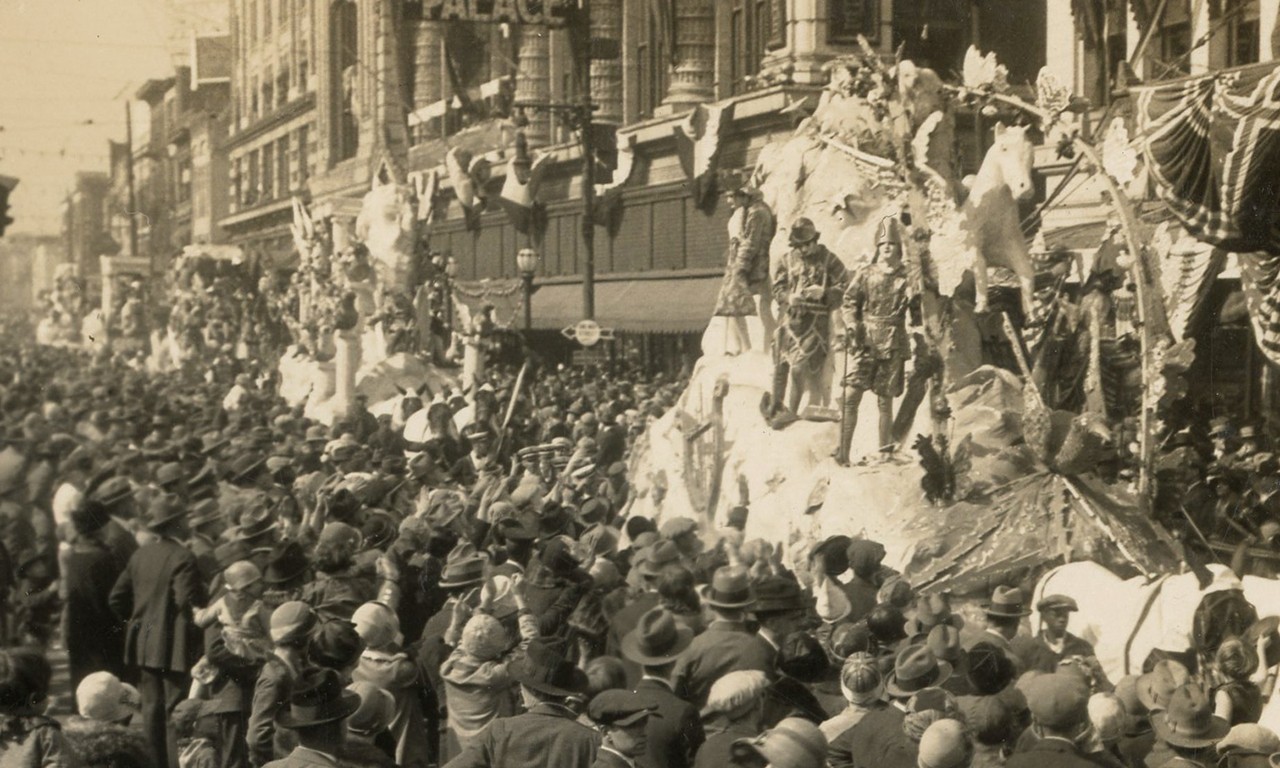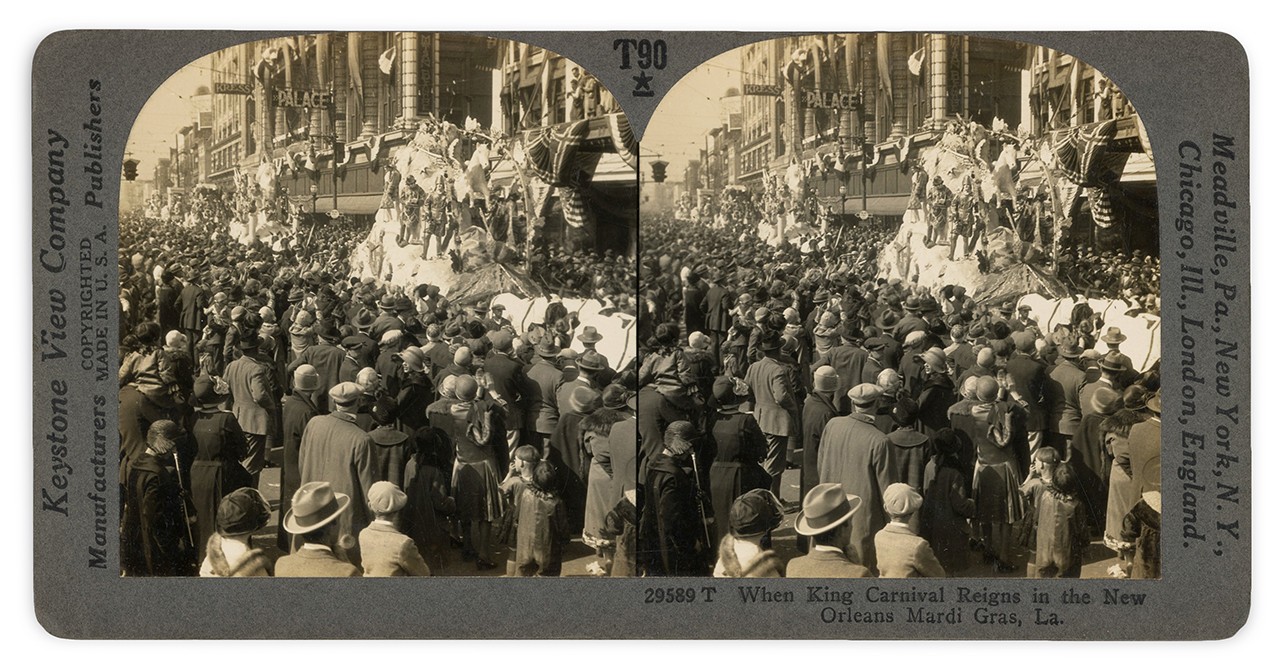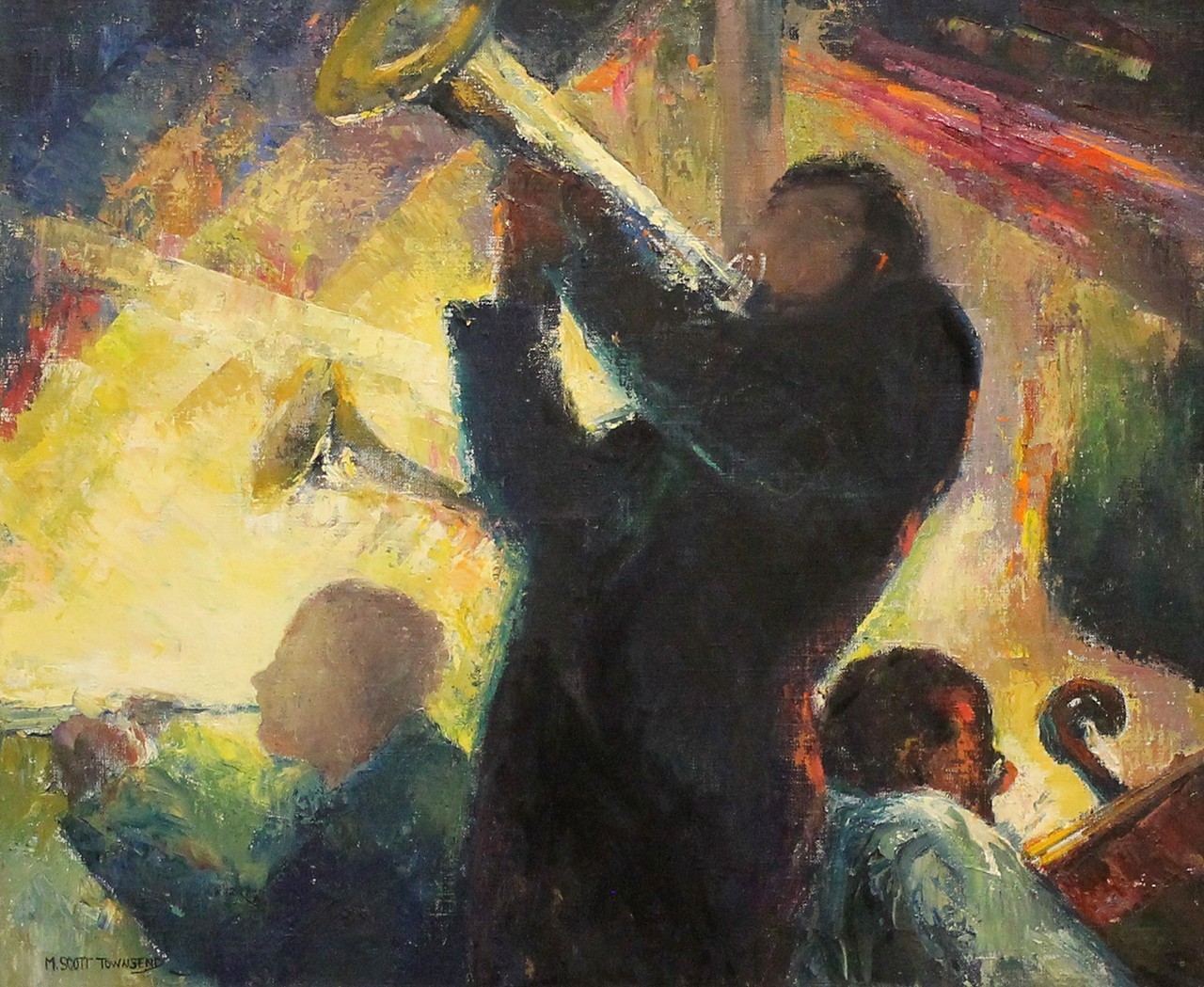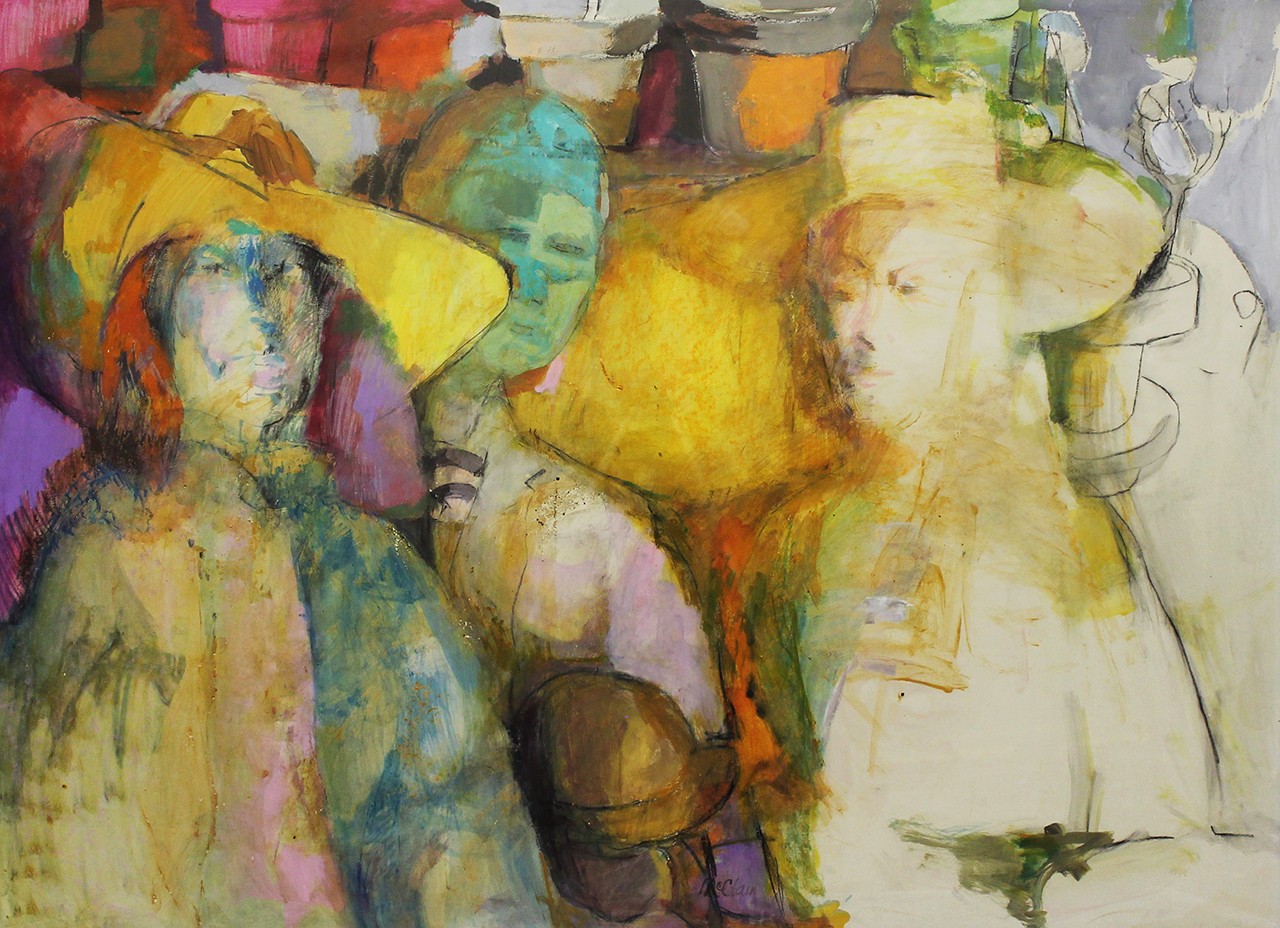 |
Detail of When King Carnival Reigns in the New Orleans Mardi Gras, La., 1924
Keystone View Company (1862-1972); New Orleans, Louisiana
Photographic print; 3 3/8 x 7 x 1/2 in.
83.22.63
Gift of Mrs. Deirede Fairback |
Ironically Medieval
Both the good times and the bad need to be punctuated with moments of celebration. Certainly, it is the case in many religious traditions that periods of fasting are either proceeded or followed by great feasts, revelry, and festivals. Mardi Gras, also called Fat Tuesday or Shrove Tuesday, was borne of these exact circumstances. In medieval times, Christians held carnival between Epiphany and the beginning of Lent—a period of abstinence from meat or fasting depending on one’s denomination. It was a season of inversions with peasants eating or even dressing up as members of the royal court: a reversal ritual in the form of a spring festival. At the end of it was Mardi Gras, one final hurrah before settling into penitence. This practice was brought to the Americas by the French in the late 17th century and grew in French-majority cities along Gulf Coast. In the 18th century Mardi Gras was celebrated in New Orleans with private masquerades. It was not until the 1830s that processions took to the streets of New Orleans during Mardi Gras with societies popping up to sponsor floats. The celebration has expanded across the United States since then, continuing to evolve, but Louisiana's largest city remains at its center. Here we look at a small group of Bowers objects related to New Orleans and its biggest annual celebration.

 |
83.22.63
Gift of Mrs. Deirede Fairback |
Seeing Double
That there is a stereograph of Mardi Gras festivities in New Orleans may come as little surprise to long-time Blog readers. Many historical posts in the Bowers’ collections feature at least one stereograph in them because of their distribution. The Keystone View Company was founded in Meadville, Pennsylvania by B.L. Singley in 1892 when a creek running through the city flooded and Singley photographed the resulting destruction in the pseudo-three-dimensional viewing format of stereograph. Over the years the company did many series, among their most famous being their Tour of the World set, marketed as a veritable “Stereographic Library” with 1,200 individual views. This is view 90 in that series. It shows a Mardi Gras parade outside of the Maison Blanche building, a view which remains largely unchanged over a century later. The float in frame is a fragment of a fever dream with animals exploding from a sculpted hillside and clowns clowning about in an oddly sullen manner; this is all to say that the characteristically mystifying nature of New Orleans Mardi Gras was evidently already well-established by the 1910s.

 |
Celebration, 1956-1959
Mildred Scott Townsend, American, (1897-1985)
Oil on canvas; 20 x 24 in.
F80.40.23
Gift of the Artist |
Celebrate Good Times (Come On!)
Celebration, a painting by Mildred Scott Townsend was first published on the Blog in Following Townsend to Abstraction. Townsend was born in Oregon, Illinois in 1897 as the daughter of a reverend. It is unclear in reading through summaries of her life—a longer biography does not exist—when she might have visited New Orleans. Based on the style of this painting and similar works it appears to have been made between 1956 and 1959. The subject matter of her painting is a New Orleans band, and though there is no cited association between the work and Mardi Gras, her use of color and even the directionality of her brushstrokes imparts a wonderful sense of vivacity and movement that is so part and parcel to the holiday.
 |
Mardi Gras, 1972
Helen McClain; California
Gouache, charcoal and pastel on canvas; 36 x 47 in.
39469
Gift of the Torana Art League |
Out of Our League
A very different take on the holiday is depicted in the little-known California artist Helen McClain’s Mardi Gras. In this mixed media work, three abstracted, ethereal figures washed in a brilliant yellow and pastels appear to be onlookers, almost suggesting that the viewer might be the raucous parade. This painting came to the Bowers Museum from the Torana Art League, a group which met in a small home on the Bowers property before it was demolished to make way for the museum’s late 1980s renovation. This work was awarded the Torana Art League Purchase Prize during an exhibition held at the Bowers in 1972. The artist was paid for their work and then the painting was gifted to the Bowers Museum to help build a collection of contemporary works.
Text and images may be under copyright. Please contact Collection Department for permission to use. References are available on request. Information subject to change upon further research.





Comments